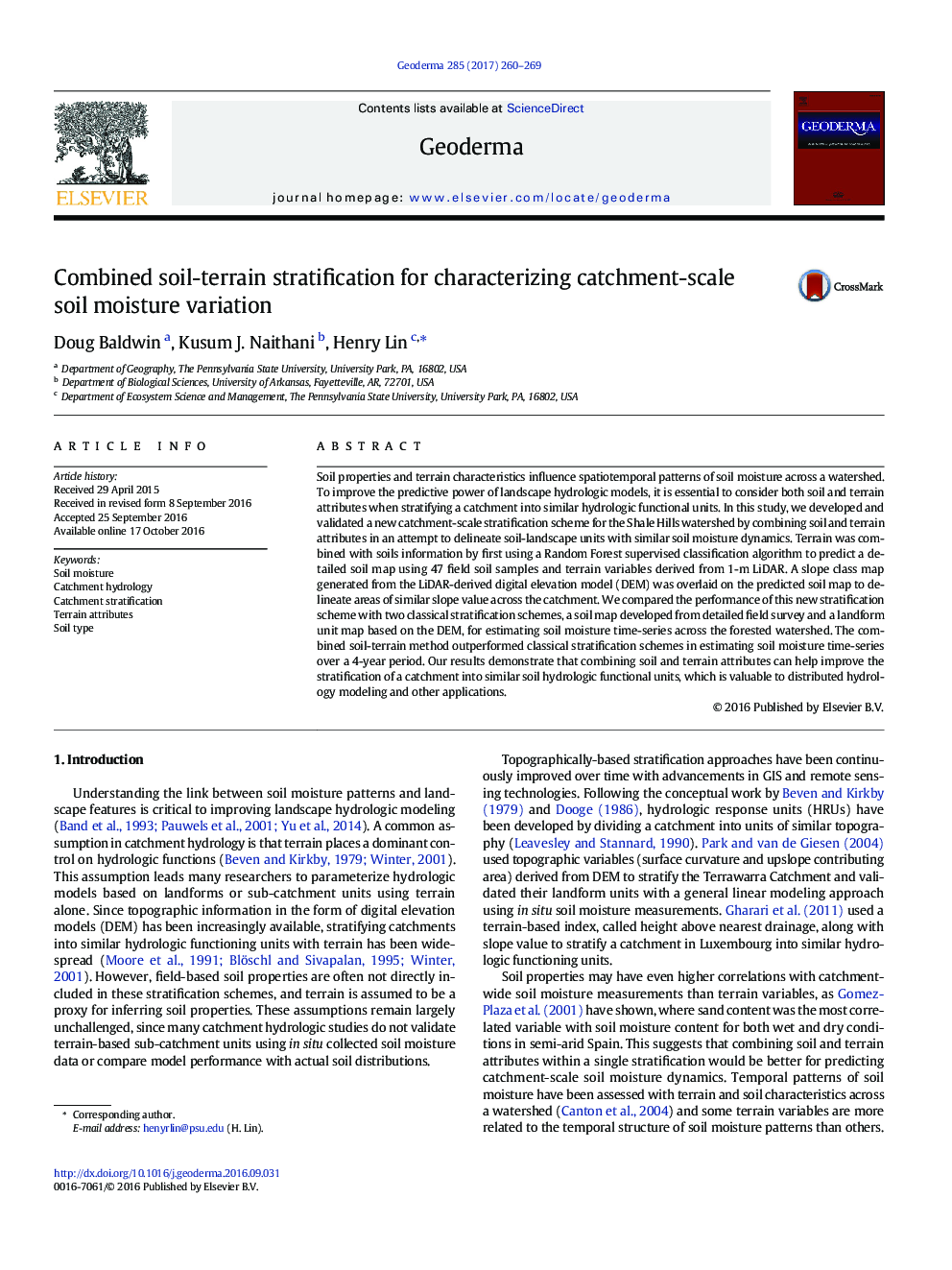| Article ID | Journal | Published Year | Pages | File Type |
|---|---|---|---|---|
| 6408227 | Geoderma | 2017 | 10 Pages |
â¢A new catchment-scale stratification scheme was developed and validated.â¢Integrating soil and terrain attributes better delineated similar soil hydrologic units.â¢Combining LiDAR-derived soil map and slope class improved soil moisture estimation.â¢Depth to bedrock and vertical proximity to stream were important to soil mapping.â¢Different terrain attributes were important to near-surface vs. subsoil moisture variation.
Soil properties and terrain characteristics influence spatiotemporal patterns of soil moisture across a watershed. To improve the predictive power of landscape hydrologic models, it is essential to consider both soil and terrain attributes when stratifying a catchment into similar hydrologic functional units. In this study, we developed and validated a new catchment-scale stratification scheme for the Shale Hills watershed by combining soil and terrain attributes in an attempt to delineate soil-landscape units with similar soil moisture dynamics. Terrain was combined with soils information by first using a Random Forest supervised classification algorithm to predict a detailed soil map using 47 field soil samples and terrain variables derived from 1-m LiDAR. A slope class map generated from the LiDAR-derived digital elevation model (DEM) was overlaid on the predicted soil map to delineate areas of similar slope value across the catchment. We compared the performance of this new stratification scheme with two classical stratification schemes, a soil map developed from detailed field survey and a landform unit map based on the DEM, for estimating soil moisture time-series across the forested watershed. The combined soil-terrain method outperformed classical stratification schemes in estimating soil moisture time-series over a 4-year period. Our results demonstrate that combining soil and terrain attributes can help improve the stratification of a catchment into similar soil hydrologic functional units, which is valuable to distributed hydrology modeling and other applications.
